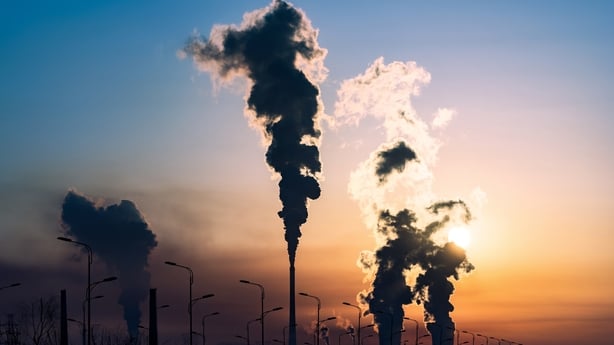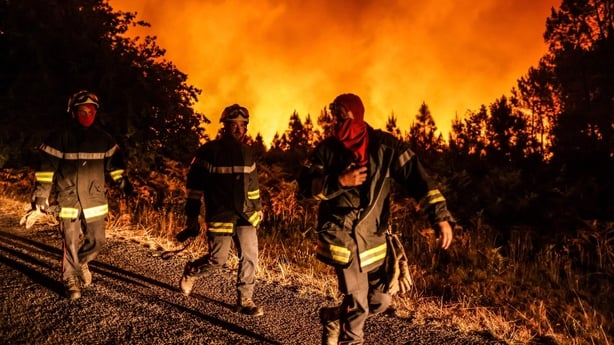We have been at this for 30 years. The United Nations Framework Convention on Climate Change (the UNFCCC) is an international agreement started 30 years ago to bring all the countries together to act collectively and face up to the humanity's biggest threat - to stop dangerous human-induced planetary climate change.
How does COP work?
Over 190 governments and states have signed up and are committed to act. Obviously some are more committed than others.
The countries who have signed up are referred to as "Parties" to the framework convention.
Once a year these parties assemble somewhere in the world at a huge meeting called a "Conference of the Parties" or COP for short.
The aim at these meetings - which last for up to a fortnight - is to assess progress on global climate action, and pile on the pressure for countries to do more.
Last year the gathering took place in Glasgow, Scotland. This year its being held at Sharm El Sheikh, Egypt’s holiday resort on the Red Sea.

This will be the 27th year the "Parties" will have met. That’s why it is called COP27.
The goal of COP27 however is still in dispute, according to Associate Professor of Climate Policy at UCD, Dr Cara Augustenborg.
The issue, she says, is that wealthy countries say they want to focus on helping developing nations "get off" fossil-fuels and transition instead to renewable sources of energy.
However, the developing countries have a different take. They say they are already experiencing the impacts of climate change. They want to focus instead on getting financial compensation for the climate change impacts that they did not cause.
The money that poorer countries are demanding is for the likes of having to move villages and towns away from the sea or from flood-prone regions to protect the lives and livelihoods of impoverished people.
The so-called Global South - a term used to describe the poorer and most vulnerable nations - have spend years banging the table to get rich countries to pay for the economic losses associated with weather-related disasters and other climate impacts that they are already experiencing.
Separate to this issue of compensation for loss and damage, the richer developed nations gave a firm commitment at a COP meeting in 2009 to provide $100bn in funding per year to help less developed nations adapt to, and overcome, the challenges and impacts of climate change.
But 13 years on since then and we are far short of the $100bn funding target. This has fuelled a loss of trust among poorer countries and undermined any sense of solidarity around tackling climate change.
What will the focus of COP27 be on this year?
So will the real focus of COP27 end up being the need for financial reparations to be paid to developing nations or will it instead turn out to be about helping those developing nations to transition away from fossil fuels. We will have to wait and see.
The Secretary General of the United Nations Antonio Gutteres is urging both sides to work together to form a historic pact.
"COP27 must be the place to close the ambition gap, the credibility gap, and the solidarity gap. To rebuild trust and to re-establish the ambition needed to avoid driving our planet over the climate cliff," he said.
However, in reality what matters even more is the need for continued pressure to get greenhouse gas emissions down urgently. That is the only way to prevent runaway climate change which would be catastrophic.
Despite that, many countries have still not submitted updated commitments or climate action pledges as they were required to do for this COP.
In the last few weeks, report after report have painted a clear and bleak picture.

Take for instance the 2022 Emissions Gap Report from the United Nations. It speaks about a "closing window" for climate action and says that the international community has fallen far short of what is required.
Starkly it concludes that no credible pathway has been outlined or pledged that would limit global warming to the 1.5C limit agreed in the Paris Accord in 2015 and that only a rapid transformation of societies now can avoid climate disaster for humanity.
Emissions are still growing at record levels.
Instead of going down by 45% by 2030 as scientist tell us must happen, greenhouse gas emissions are now on course to rise by 10%, according to the United Nations.
So far, human induced greenhouse gas emissions have warmed the earth by almost 1.2C compared to pre-industrial times. The recent United in Science report coordinated by the World Meteorological Organisation said there is now a 50% chance that the Earth will exceed 1.5C of warming at least one year during the next five years.
Meanwhile temperatures are on course to rise by as much as 2.8C by the end of this century with the present policies in place.
What this all means is that our planet is on course to reaching tipping points, that will make climate chaos irreversible and temperature rises unavoidable.
From tipping points of disaster to turning points of hope
The United Nations Secretary General says that governments at COP27 need to move us away from the tipping points of climate disaster towards turning points for hope instead.
That will require urgently increasing ambition and trust, especially between the global north and south, he says.
Time is clearly running out when it comes to reducing emissions.
The major focus at COP27 really needs to be on making sure that government pledges about emissions reductions are increased as much as possible. And this means not just increasing the pledges from wealthy nations but increasing climate pledges from developing countries too.
The fact that COP27 is being held in Africa this year is particularly relevant as 17 million people in the Horn of Africa are currently suffering from extreme climate stress and the onset of famine.

This is something that Emeritus Professor at Maynooth University John Sweeney - a veteran participant at COP meetings - says developing countries will want to highlight at Sharm El Sheikh.
But Professor Sweeney says he is also worried this year about the impact of growing geopolitical tensions between the world’s two largest greenhouse gas emitters, the United States of America and China.
This has resulted in climate co-operation between the two biggest players being effectively suspended, he says.
There are also the very serious considerations related to the war in Ukraine, spiralling food and energy prices, deepening concerns about public finances and the devastating impacts of the pandemic. Many countries are now prioritising their own energy needs over and above global climate ambitions.
This increased focus on short-term issues, has caused some governments to take their eye off the ball in terms of what Professor Sweeney describes as "a tidal wave of climate change" that the whole world is facing over the next few years.
Because of all this, COP27 is not expected to achieve as much as some previous COP meetings. If that turns out to be the case, it would be an unfortunate loss of the limited amount of time left for the world to act.








